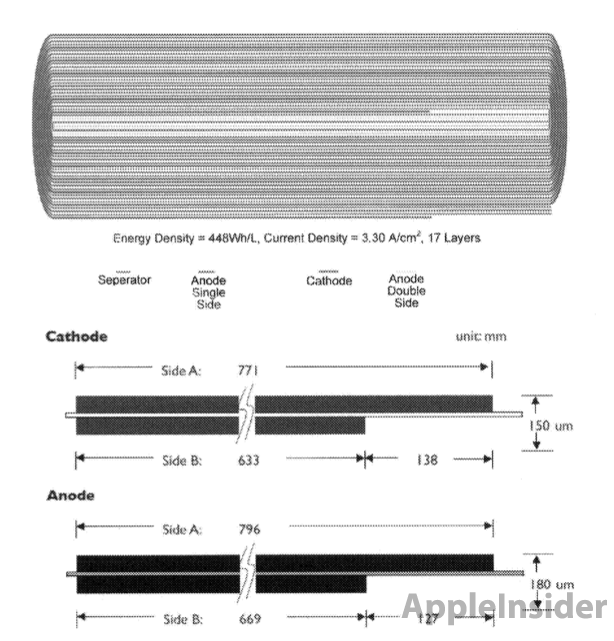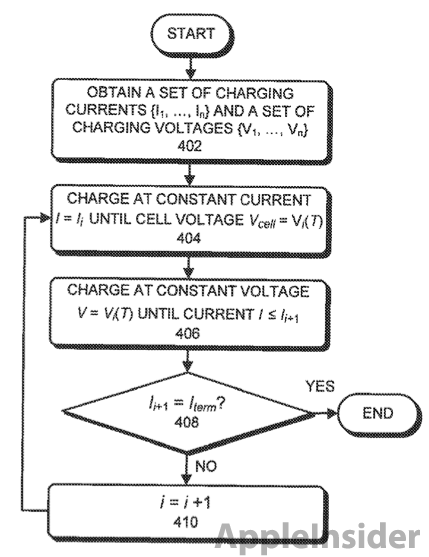Apple looking to increase battery life with dense lithium cells
The proposed invention is detailed in a new patent application published by the U.S. Patent and Trademark Office this week and discovered by AppleInsider. The filing, titled "Increasing Energy Density in Rechargeable Lithium Battery Cells," describes charging a battery using a "multi-step constant-current constant-voltage (CC-CV) charging technique."
The CC-CV charging technique would allow the thickness of the anode active material inside a battery cell to be increased in both "volumetric and gravimetric energy density." But while the density of the power capacity would be increased, the size of the battery, as well as its maximum charging time and minimum life cycle, would remain unchanged.
Apple's application notes that the conventional method for increasing the battery capacity, or ampere-hour (mAh), of a lithium-ion or lithium-polymer battery involves increasing the lengths of the anode and cathode current collectors, as well as their coating materials But increasing the area of current collectors results in lower volumetric energy density, and results in a larger battery.
"What is needed is a technique for increasing the energy capacity of a rechargeable lithium battery without increasing the size of the battery sell," the filing states.
Apple's application notes that the company intends to make battery cells smaller, allowing the "limited space available in portable electronic devices to be used more efficiently." The company noted it could use the space savings to add more features, or more battery capacity.
But one issue with employing the multi-step CC-CV charging technique is battery life can be significantly decreased depending on temperature. For example, using the same current-charge density at 10 degrees celsius will lower the cycle life "substantially" when compared to a higher temperature such as 45 degrees.
In addition, current-charge densities further reduce the battery's cycle life if it is at a higher state of charge, between 70 percent and 100 percent.
Apple's solution would reduce the charge currents for a mobile device when its battery is at a higher state of charge, or a lower temperature. This would avoid degradation in the cycle life of the battery, and potentially even increase it, without any required change in battery chemistry.
The multi-step charging technique would be compatible with the new battery design and would increase battery life by dynamically adjusting the rate of charge when the battery is at different states of charge, or different temperatures.
Apple's proposed invention revealed this week was first filed with the U.S. Patent and Trademark Office on Aug. 22, 2009. It is credited to Ramesh C. Bhardwaj and Taisup Hwang.
 Neil Hughes
Neil Hughes












 Mike Wuerthele
Mike Wuerthele
 Malcolm Owen
Malcolm Owen
 Chip Loder
Chip Loder

 William Gallagher
William Gallagher
 Christine McKee
Christine McKee
 Michael Stroup
Michael Stroup
 William Gallagher and Mike Wuerthele
William Gallagher and Mike Wuerthele







